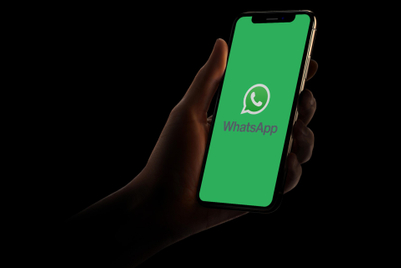
Wrist wearables are meant to be more than just a pretty face, but brands are increasingly banking on good looks to get ahead of the game.
‘Style’ and its many synonyms now regularly appear in smartwatch and wristband marketing copy — often given equal weight as details of the gadget’s fitness tracking prowess, navigational precision, smartphone synchronisation or long battery life.
Fitbit calls its latest Alta “fitness and fashion on display”. Apple Watch pairs up with Hermès for “a product of elegant, artful simplicity”. The Huawei Watch, meanwhile, declares that it has been “crafted as a premium watch first”.
The emphasis on sophistication and status are everything that Asian consumers want to hear. According to Loo Wee Teck, head of consumer electronics research at Euromonitor International, standing out from the crowd and being seen as well-off are two of the top consumer priorities in the region. This is in line with global trends.
This may explain why Asia-Pacific is dominating the wearables playing field. The region contributed half of the total yield last year, reports Euromonitor, while sales in China alone are three-fold those in the US.
Wearables win hearts because they give more bang for consumer’s buck, explains Loo. The price of an Apple Watch may not be too different from a Seiko — but it is more likely to turn heads.
Many consumers prefer to pay much less. Euromonitor reports that Xiaomi, with its Mi Band priced below US$20, led the region’s market share at 36.8 percent in 2015. Samsung and Huawei trailed far behind at 6 percent and 5.1 per cent respectively. Apple Watch ranked fourth at 4.6 percent, followed by Fitbit at 4 percent.
Mi Band may not be the as sleek as some of its competitors, but its success suggests that affordability and a 30-day battery life (against an average of eight days) beat style.
Kenneth Liew, senior research manager of International Data Corporation Asia-Pacific, predicts that Xiaomi will hold onto its market lead for the time being. However, he believes the region is beginning to evolve from its ‘experimental’ relationship with wearables, and enthusiasm is likely to shift from affordability to style and functionality.

He cites the example of the Garmin Fenix 3 HR. Its updated functionality and rugged design have enticed many to adopt the fitness training and outdoor navigation device as their daily watch. “It is now one of the company’s top selling watches in the first quarter of 2016,” Liew says.
Fashion giants such as Fossil Group are now lining up for a slice of the pie. The watch retailer will launch 100 “fashion-first” smart accessories across eight brands, including Diesel, Michael Kors and Kate Spade New York, by the end of this year.
Diarmuid Bland, senior vice-president of Fossil Group, expects these wearables to perform well in Asia-Pacific, given the response to Fossil Q Founder smart watches in Hong Kong and Macau when they were launched last year.
According to Fossil, fashion retailers trump tech brands in keeping pace with the ever-changing trends of high-street retail.
However, no fashion brands have emerged as major players on the scene. Yet.
“The market is such a new category that it is a clean slate,” says Loo. “There are a lot of opportunities for new players to enter the market.”
EXPERT OPINION
Wearables: smart is the new black
David Ko, managing director, Daylight Partnership

Wearables became the talk of New York Fashion Week this year when designer labels such as threeASFOUR and Public School showed how blending fashion with function is the way forward.
That also means design choices that render the smart functions invisible, further highlighting the fashion accessory aspect. Smart wearables now map sleep patterns, detect the exercises you are doing and measure your heart rate, all without user intervention.
Marketing wearables must follow this evolving trend as well, so brand messages are extending from pure function to aesthetics. Tech matters, but now we must also talk about how that bracelet can enhance your look of the day like any other accessory.
So the calf leather bracelet or bangle on your wrist doubles as a smart device — and consumers are loving it. IDC predicts that the wearables market will generate double- digit annual growth from now until at least 2020, culminating in shipments of 237.1 million wearable devices by that year.
The scope of wearables will go beyond what is worn on the wrist. Smart apparel and shoes are here now, and we should soon see smart jewellery and eyewear become mainstream.
A convergence of smart wearables and social connectivity is also the key to marketing these devices. As voice and gesture recognition technologies mature, consumers will interact with Snapchat or Whatsapp without physically touching their wearable device, fuelling the next stage of the wearable revolution.


.jpg&h=334&w=500&q=100&v=20250320&c=1)
.jpg&h=334&w=500&q=100&v=20250320&c=1)
.jpg&h=334&w=500&q=100&v=20250320&c=1)



.png&h=334&w=500&q=100&v=20250320&c=1)

.png&h=334&w=500&q=100&v=20250320&c=1)

.jpg&h=268&w=401&q=100&v=20250320&c=1)
.jpg&h=268&w=401&q=100&v=20250320&c=1)





